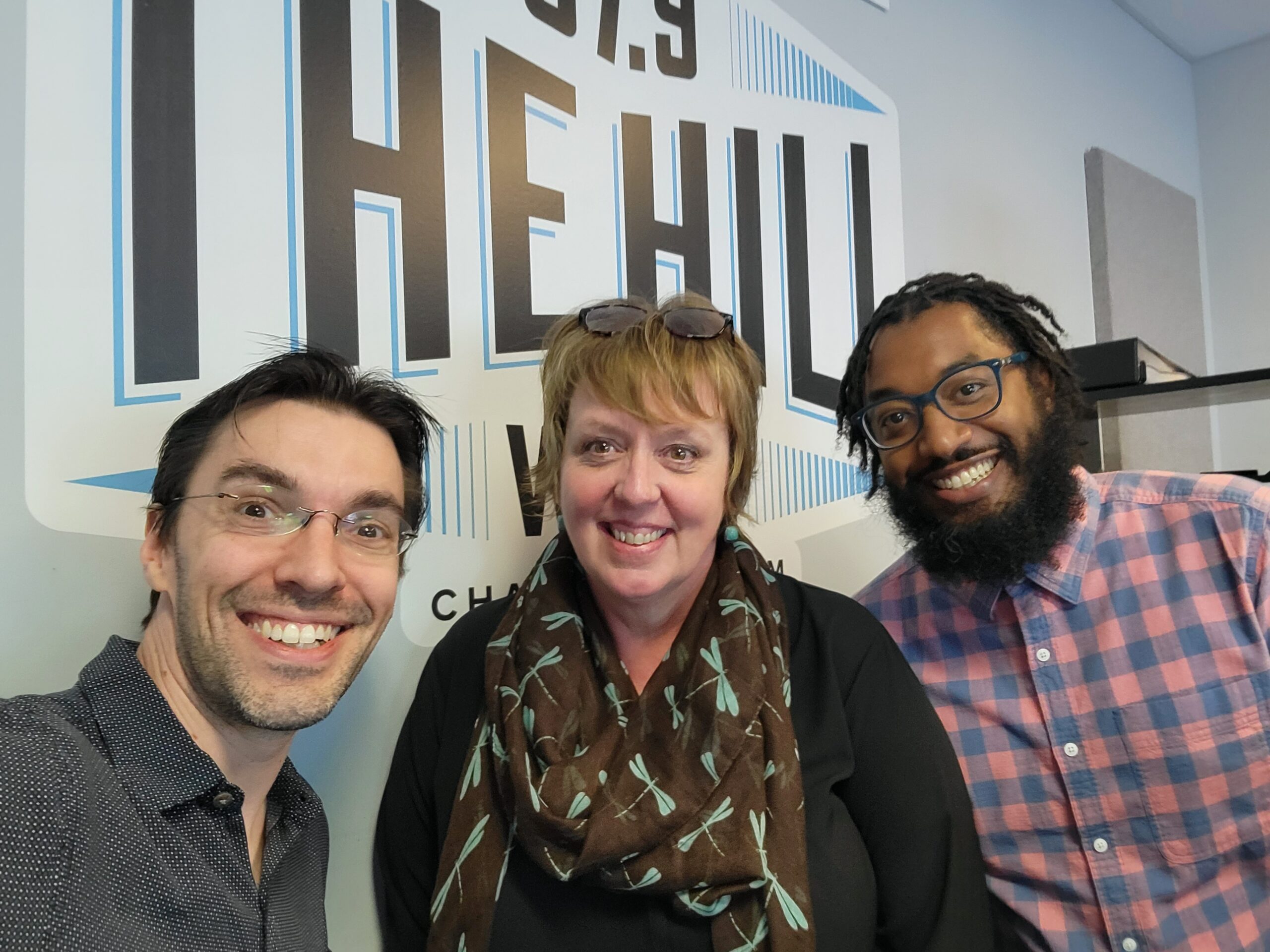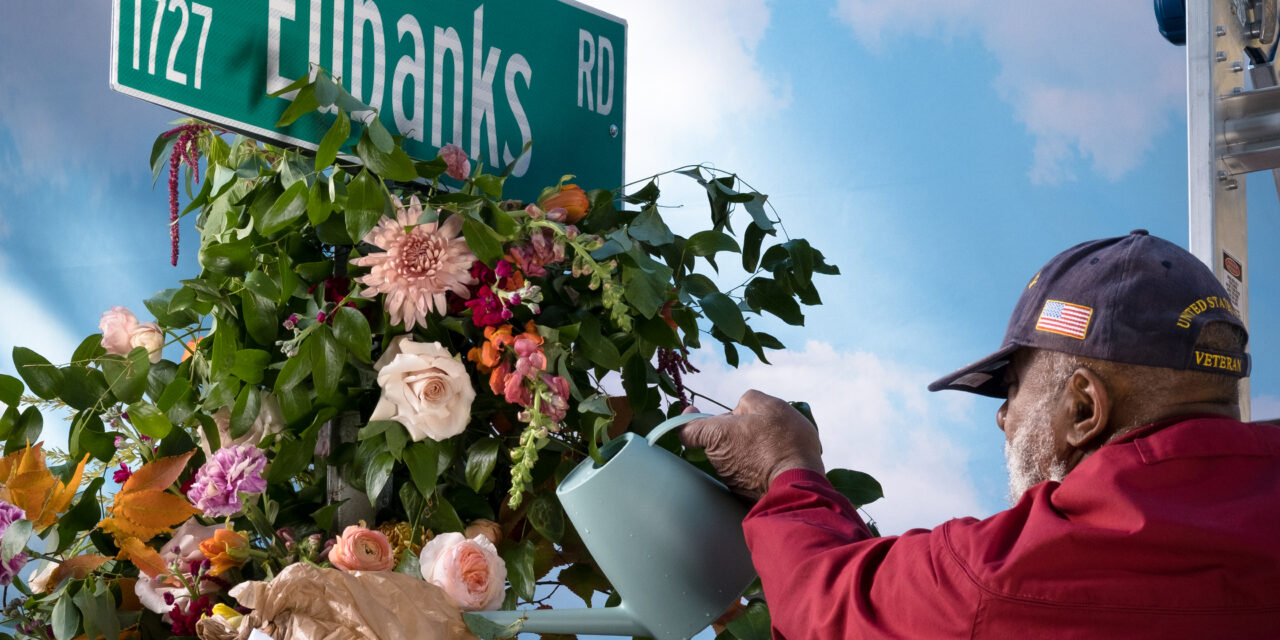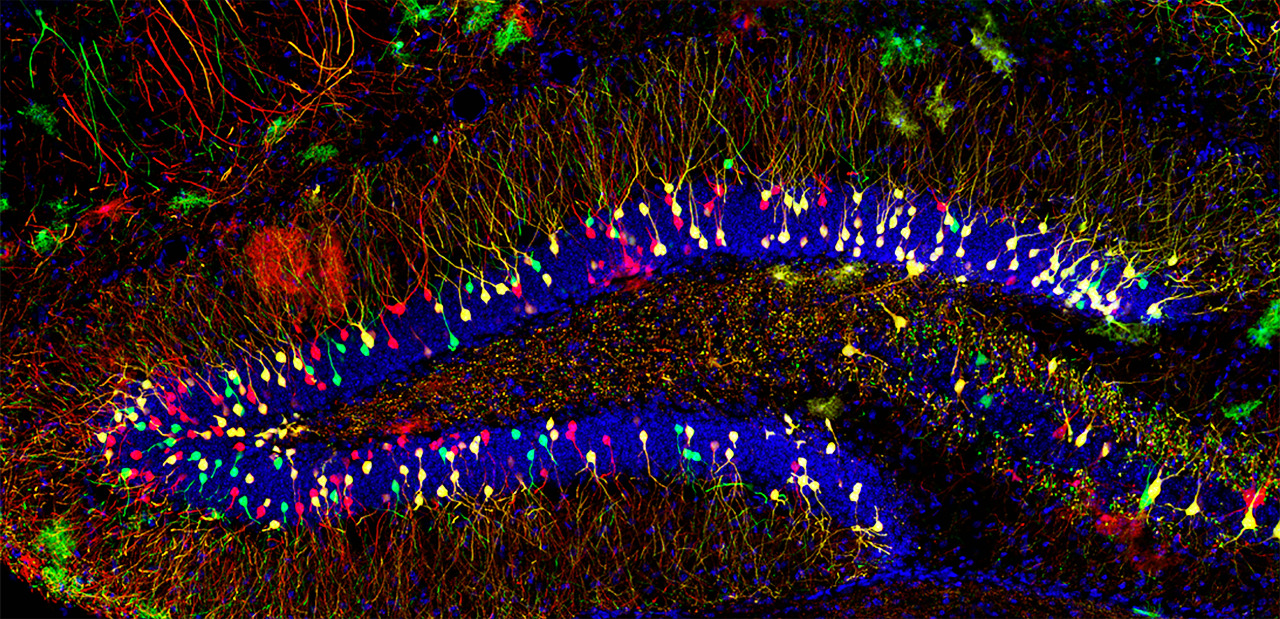It never did appear at UNC’s Stone Center, but this week, local residents will get their first chance to see a provocative photo exhibit about Black history, past and present, here in Chapel Hill.
The exhibit is “Tarred Healing,” by photojournalist Cornell Watson. First commissioned by the Stone Center, the planned exhibition fell through earlier this year – in a very high-profile fashion – over conflicts involving some of the photos.
Watson’s photos ultimately appeared in the Washington Post, but they haven’t been exhibited in person – until now.
Starting April 30, the Chapel Hill Public Library is hosting “Tarred Healing” for two months until June 30. The exhibition begins with an opening reception on Saturday, April 30, from 7-9 p.m., free and open to the public.
The library’s exhibit will feature all 14 of Watson’s photos, including those that would have been nixed at the Stone Center. The Chapel Hill-Carrboro NAACP provided additional funding to prepare those photos for public display.
On Wednesday, 97.9 The Hill’s Aaron Keck welcomed Watson for a conversation about “Tarred Healing,” as part of his weekly “Talking Books” feature with Chapel Hill Public Library director Susan Brown.
Listen to their conversation.

Aaron Keck: We know about the exhibit, we’ve covered the saga of what happened with the Stone Center – but tell us about you.
Cornell Watson: So I’m a North Carolina native, grew up in Halifax County, went to North Carolina A&T in Greensboro, and I moved to Durham about seven years ago. My previous career was in HR talent acquisition. I did that for about eight years. I (originally) picked up a camera to photograph my daughter. She’ll be four in June, June 6th. (Then) I had friends that were like, hey, I see your photos – can you take photos of my kids too? And it turned into a part-time business.
Then the pandemic hit and I said, what am I supposed to do now? I can’t walk into families’ homes. (So) I started working on a personal photo story called Behind the Mask – and then I lost my job on Juneteenth. I tell people that’s when I got my freedom papers. (Right) after I lost my job, I got a call from Durham Magazine and I started freelancing for them that following week. So it’s just like the stars aligned. I photographed Keith Knight, who lives in Carrboro, for a story for Chapel Hill Magazine – and he called me up a few weeks later and was like, “Hey dude, do you want to photograph me for this assignment for the Washington Post?” And in the back of my brain, I’m like, I have zero photojournalism experience…
Keck: That’s how all the great careers begin!
Watson: So I do this assignment for the Washington Post. And I reached back out to them – this is my talent-acquisition brain kicking in, you leverage these relationships – and I pitched that photo story that I was working on, Behind the Mask, and they published it. And then after that – it was like overnight, I was a photojournalist, freelancing for the Washington Post and the New York Times. I ended up getting a grant for Behind the Mask from the Syracuse School of Communications to continue work on it, and I’ve never looked back.
Keck: So tell us about the origins of Tarred Healing. How did that idea come to you?
Watson: The Stone Center reached out to me (in 2020) after Behind the Mask was published in the Washington Post. Then in 2021 they formed an artist residency for me to come and do some work, similar to Behind the Mask, but related to Chapel Hill, the Black community in Chapel Hill. They kind of gave me this theme of, “we want you to focus on Black spaces in and around Chapel Hill (and) the University.” I just started going to campus, just to get a feel for things – especially, like, Black students, how Black students feel, because they’re going to tell you how it is.
Then they suggested some places for me to go visit. Rogers-Eubanks was one. I already had a former relationship with Rogers-Eubanks, I’d done a story about environmental injustice for NC BREATHE, the conference on environmental justice. (I went) where James Cates was murdered, the Unsung Founders memorial, Silent Sam, (everywhere) that you could possibly think of related to the Black community. The cemeteries, Barbee cemetery, Old Chapel Hill cemetery. I started going to these places and just sitting there with my thoughts, reading through the University archives…
Keck: What were some of the most striking or enlightening conversations you had?
Watson: The most enlightening ones are definitely with Rogers-Eubanks. Their story is just insane. Because, you know, it predates the environmental injustice, the things that we know about with the landfill. Their history goes all the way back, emancipation (from) slavery, even prior to that. And then when you think about how Rogers-Eubanks connects to the rest of Chapel Hill, it’s just kind of insane. So many families came from Rogers Road, the Caldwells, the Hogans, the Strayhorns.
Keck: This was the exhibit we’d been following in the news – it was set to go up at the Stone Center, and that ended up falling through at the last minute. What was it like to be in the middle of that?
Watson: Yeah, it was like being in the eye of the tornado. Like, what in the world is going on!
Keck: Not even the eye of the hurricane, that’s the calm part – the eye of the tornado, where all the crazy stuff is happening!
Watson: Yeah, I think it’s taken me a while to just process what happened. In the moment it’s really easy to let things like that go – but then I really had to think to myself, like, this is bigger than me, there are other things that are impacted by this decision. The stories of Black Chapel Hill, and the people that I’ve met with – those stories, they deserve to be heard. The other piece of it is, with other artists that are facing similar issues – this is a moment to really stand up and say, you know what, I’m going to stand behind my work. And if I need to go publish it in the Washington Post for these stories to be heard, then I’ll publish it in the Washington Post. And I think other artists felt inspired to stand up for their own work from that.
But I think one of the most important parts of this is that the stories of Chapel Hill that often aren’t heard are having a chance to be heard in a different way and felt in a different way, through photography.
Keck: From the outside looking in, it seemed like just a weird series of miscommunications. What more was going on beyond that?
Watson: It’s easy to kind of chalk this up as a series of miscommunications, (but) I would disagree with that. Especially when you look at a lot of the initial contact, when you look at the letter of intent about what was supposed to take place, the theme of things, how they approached me based on Behind the Mask, asking me to interrogate these places and tell these truths and all these things – like, I read the letter of intent and I was like, oh my God. Like, they know me! I was super excited about it. But then once the photo series was done and I’d created exactly what we had all discussed – and (then) we’re trying to exclude certain images, especially the ones with the student demonstrations – yeah, I would say that it was less about miscommunications and maybe more about a way that they wanted to have the story portrayed, and the level of influence on art. You know, if you’re going to have an artist come and create art, especially in a residency that’s supposed to be a place where the resources are provided for you to create and think freely and do all these things – then you kind of got to take your thumb off the scale and just let that thing happen.
Keck: So how did it come about that the exhibit is going up with the library?
Susan Brown: So I saw the narrative unfolding on the Twitter, and I reached out on Cornell’s website… Danita (Mason-Hogans) pulled together a group of Black community leaders, (and) we gathered together and talked about Cornell’s experience. And as I heard it, it really reaffirmed in me that if Cornell and the community wanted it to be at the library, we would welcome it. We’re a place where difficult conversations can and should happen. And we’re all about stories told and untold, and comfortable and uncomfortable. So we’ve done a lot of work to give this show the treatment and respect and visibility that we think it deserves.
Cornell Watson’s artist statement about “Tarred Healing”:
There is much to celebrate about the Black community’s contributions to Chapel Hill, North Carolina and America’s oldest public university, The University of North Carolina Chapel Hill. The Chapel Hill Nine and the Freedom Fighters helped shape America into a more idealized version of itself. Black leadership is embedded in our history through pioneers like Howard Lee, one of the first Black mayors in the South. We also remember the multitude of trailblazers that shattered ceilings at UNC such as Leroy Frasier, John Lewis Brandon, Ralph Frasier, and Karen Parker, the first Black students and first Black woman student enrolled in this prestigious university.
Through their work, we also acknowledge the physical contributions that, in stone and mortar, are the foundations of the institution which are inherently the result of chattel slavery. The blood, sweat, and tears of our enslaved and free ancestors have seeped into the soil, floors, walls, and stones of this community and university. It is only through their determination to survive and persist that we are here today. Their spirit of unbroken resilience continues within us because there is still so much healing and trailblazing work to be done.
James Cates, who white supremacists murdered on campus, still needs us to fight for justice. Nikole Hannah-Jones showed us that we still need to fight for equity and equality. The UNC board of trustees showed us that we still need to fight for diversity. Rogers-Eubanks still needs us to fight against environmental injustice. Our ancestors still need us to fight for our history to be remembered and honored. We still need to fight and dismantle institutions of white supremacy. We still need to fight for reparations. We need to recognize with intentionality the many forms in which our diverse community seeks healing.
This photo series, a combination of conceptual and documentary photography, is a reflection of our truth through places, people, and systems in Chapel Hill. It is an unapologetic archive of our feelings and emotions. It is a vessel for self-healing. Despite continued obstruction by whiteness, we will heal, even if it is tarred.
Featured photo by Aaron Keck.
Chapelboro.com does not charge subscription fees, and you can directly support our efforts in local journalism here. Want more of what you see on Chapelboro? Let us bring free local news and community information to you by signing up for our biweekly newsletter.




